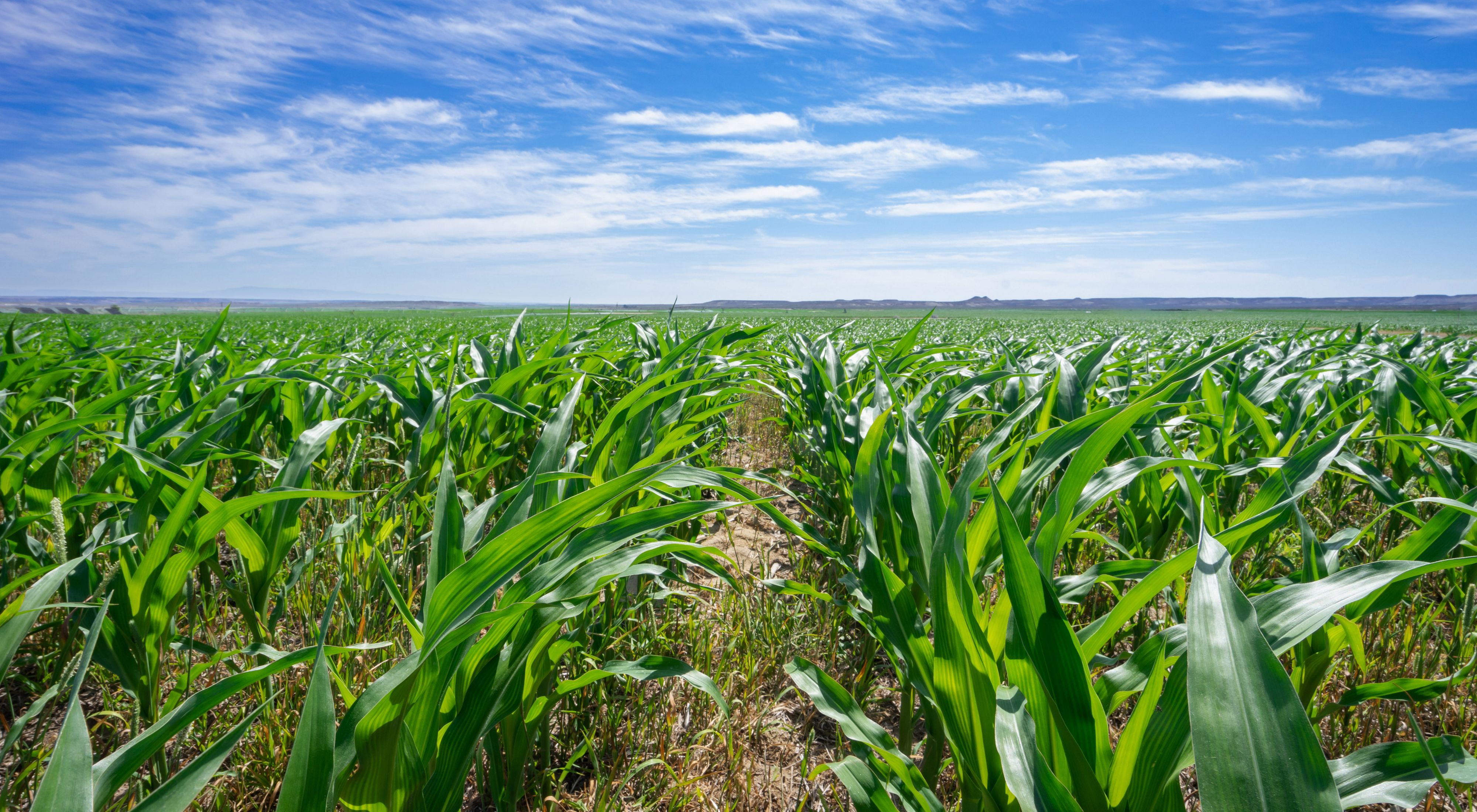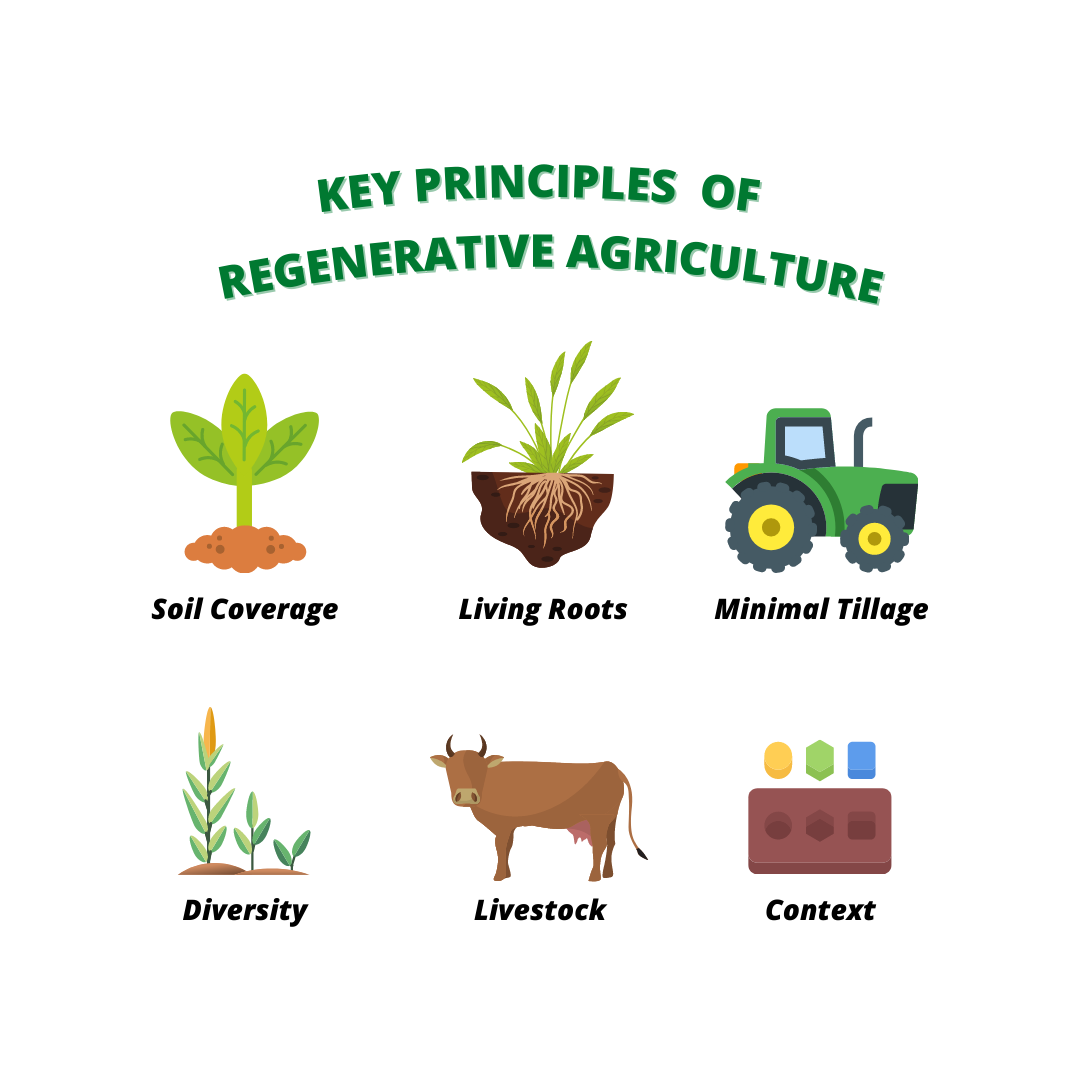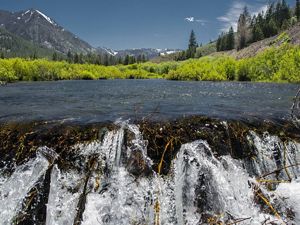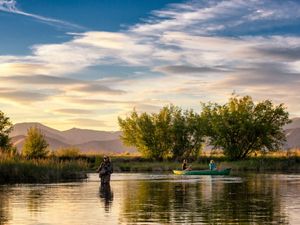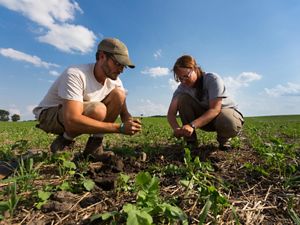Using Regenerative Agriculture to Transform the Way We Grow Food
Soil health farming practices can protect the environment and produce healthier food while reducing climate impacts.
Healthy Soil, Resilient Waters
When you think about conservation in Idaho, agriculture may not be the first thing that comes to mind. Yet, agriculture, an industry that touches nearly every aspect of life in Idaho, holds the potential to unlock solutions to some of our most complex environmental challenges.
Idaho leads the nation as the top producer of potatoes and commercial trout and is the third-largest water user in the U.S., due in part to irrigation. This means implementing sustainable, regenerative agricultural practices in Idaho is among the highest-potential strategies for protecting the environment and reducing climate impacts in the state. At the same time, improving soil health and water quality also supports the economic interests of Idaho’s large farming community that depends on healthy lands and freshwater.
A Conversation with TNC's Agriculture Manager
On the Connecting Conservation podcast, Neil Crescenti shares insights on regenerative agriculture and water projects in Idaho.
Traci Swift:
Welcome to Connecting Conservation, a podcast brought to you by The Nature Conservancy in Idaho. We believe by bringing people together to drive transformational change and tackle the biggest conservation challenges in our state, we can secure a future where both people and nature thrive. I'm your host Traci, and for our inaugural season, we are exploring the topic of water in the Gem State. From recreation to wildlife to agriculture, water is important to all of us, so water management should be too.
Today our guest is Neil Crescenti. Neil is the agricultural program manager at The Nature Conservancy in Idaho. He has 15 years of experience in land and national resource management. This includes things like managing state and land leases for farming and ranching, farmland conservation, water right transaction work and more. For this episode, Neil and I discuss TNC's Healthy Soil, Resilient Waters program and a unique project that shows the importance of creativity and conservation. Welcome, Neil.
Neil Crescenti:
Thanks for having me.
Traci Swift:
Yeah. So as our agriculture program manager, you oversee the Healthy Soil, Resilient Water Initiative. What exactly does that encompass?
Neil Crescenti:
So there's actually two programs under the initiative. The first is our regenerative farming program, which is aimed at increasing soil health in Idaho by creating the enabling conditions for farmers to adopt regenerative practices such as cover crops or minimizing tillage. So we do that by filling knowledge and resource gaps that we see out there, as well as exploring different incentive structures to help farmers kind of adopt these practices in a way that makes economic sense for them. And then the second program is our Resilient Waters program, which is focused on exploring how we can use and manage our water resources in such a way that it supports both agriculture and freshwater systems, particularly in the face of the uncertainty and extremes that climate change is creating for us.
Traci Swift:
So I think when some people may think The Nature Conservancy, they think very traditional, like land conservation, conservation easements. Why is it important for TNC to get involved in the agriculture field?
Neil Crescenti:
So freshwater conservation is really a core focal area for TNC globally, and a large part of that is because water is so critical for both people and nature. Here in Idaho, we're so dependent on water. Being a primarily agriculture economy state, water is a key function of that. And so when we look across the spectrum of our programs, whether that's regenerative farming or conservation restoration of salmon habitat, water is the key. And so as we've seen daily, over the past several years, climate change is really creating disruptions across the Western US in terms of our water supply, not only in terms of our natural systems, our rivers, our aquifers, but also in terms of the structural and administrative systems that we've built around those natural systems. And so water is hugely important to what we do here at Idaho TNC.
Traci Swift:
This last year, you launched a really unique project in east Idaho called the Teton Creek Land & Water Project. So before we dive into the details of it, I know you were just over there in this area. So could you describe what it looks like and when you're out there, what it feels like?
Neil Crescenti:
Yeah. So the Teton Creek Land & Water Project is located around the City of Driggs, which is in eastern Idaho portion of the state, in what we call the Upper Snake River Basin. So it's a valley region, it sits below the Teton Mountains. And this is a region that's really important to the state's water resources. The Snake River supplies water to southern Idaho's communities, our agriculture, again, a huge part of our economy. So it's really an important region, both in terms of the region itself as well as the state. Those same mountains and rivers have also made it an attractive place to live, and visit. So the valley's seen significant changes over the past 15, 20 years. So there's been a lot of development, a lot of loss of farmland, so it's really a region in transition as well.
Traci Swift:
So with the transition and everything happening in the area, what issues are Teton Creek and surrounding areas facing?
Neil Crescenti:
So agriculture is still a significant and important part of the community of the valley and has also been a historical user of water. This region is also home to the native Yellowstone cutthroat trout, which has seen significant in population declines due to a variety of reasons, from stream flows and water temperatures, but also the dynamics between traditionally irrigated agriculture and the underlying aquifer. So much of the water from Teton Creek is diverted out of the creek into a system of canals that's used for irrigated farm fields and pastures in the valley so that mid to late summer, when we have high temperatures and low natural flows, a significant portion of that creek actually dries up and disconnects it from the Teton River. This is also the same time of year when farmers need irrigation the most. And so the challenge is how do we manage the use of water so that we can continue to support the valley's agriculture productivity and ensure that there's sufficient late-season water for those fish populations.
Traci Swift:
Definitely trying to find the balance between the needs of people, the needs of nature, and so everyone can thrive. So with all those issues kind of compounding, how are we helping to address those? What is TNC doing so there's water for both?
Neil Crescenti:
Sure. So before diving into that, I think one of the things I want to recognize is that in terms of our water work, water is definitely a localized issue. And so in terms of our water work, we try and engage at that local level to come up with solutions.
And so in this area, we are part of the Upper Snake Collaborative, which includes friends of the Teton River, Henry's Fork Foundation and Trout Unlimited. And really the goal of the collaborative is to leverage the strengths of those respective organizations in a way that allows us to have a greater impact on the landscape. So organizations such as Friends of the Teton River, Henry's Fork Foundation have really been critical for us to understand the local issues, the water systems that we're dealing with, irrigation management, just all those pieces as well as connecting us with local community as well as stakeholders. And I have to give mention to Sarah Lien our water strategy manager. She has been a huge asset to this project, both in terms of her knowledge of Idaho water law and management, but also as a resident in the valley, she's really opened so many doors for us. So she's definitely been a key asset for this project.
Traci Swift:
I think that's something TNC has been pretty great at since I've been hired, is we do have a lot of those local connections that we're able to use and come up with those local solutions and be a part of the community. You mentioned the... Is it a coalition? It's a collaborative?
Neil Crescenti:
The collaborative? Yeah.
Traci Swift:
Because I think it's definitely a theme we see in TNC is collaboratives really help us make the work go forward.
Neil Crescenti:
Yeah. I think the strength of collaboratives, and one of the reasons that TNC's uniquely positioned in this space is that because of our values, what we value and the way we work, we're able to work across a variety of organizations and stakeholders. And I don't think there's many organizations out there that can do that; that have the reputation to work with local communities, to work with other NGOs, to be a partner to state agencies, and bring that element to a local group. So I think collaboratives and TNC's approach to working in that way really makes us a unique organization and is highly effective, in my opinion.
Traci Swift:
So when it comes to water management, what is unique about this project?
Neil Crescenti:
So in the Western United States, water is governed and managed by what is called the Prior Appropriations Doctrine.
Traci Swift:
Big words.
Neil Crescenti:
It is, which has essentially created water rights or individual private property rights to use water.
So essentially what this does is it allows someone who's not adjacent to a water source, a river or stream and creek, to be able to access that water for uses such as crop irrigation. And so this has allowed agriculture and communities across the west to develop. And as that development occurred, farmers also organized to pool their resources and share in the management and distribution of water. So this is where we had the formation of organizations such as canal companies or irrigation companies where those rights were pulled, and then the resources were pulled together to be able to distribute that across a community or a landscape. In the organization of those water rights, they're divvied up among members of that company that are represented by what we call shares. And so it's similar to stock shares in a company. That's probably what people might be most familiar with.
So oftentimes in water projects, we work with individual landowners who may hold individual water rights. And so generally these are small in terms of quantity of water. And essentially what we're able to do, in the Teton Creek Land and Water Project, we've acquired shares within the canal company, which provides us more opportunities both through the water that those shares represent, but also in working with other members and the organization as a whole. So really the project opens up opportunities for creative solutions on a much bigger scale than if we were to work with a individual landowner or several individual landowners.
Traci Swift:
So in those creative solutions and the shares that TNC has, what strategies are you doing to make a difference in the Teton Creek area?
Neil Crescenti:
So some of the strategies we're looking at are potentially leasing the water that we have acquired. So we will no longer be a landowner. We'll be placing conservation easements on the farmland, reserving some water for those lands. But we'll also be looking at utilizing the pool of shares, if you will, or the water associated with those shares to lease that water to downstream users, other users within the system, and doing it in a way that keeps as much water in the system as long as possible. So that might mean using water early so that we have more water late season. It may mean for groundwater recharge, which will benefit not only the immediate system, but within the Teton River, as well as looking at some system upgrades. So this may be automating head gates, doing some piping so that we have less water loss as we move it through the canal system. So again, a lot of different options that this project provides us the opportunity to explore.
Traci Swift:
If someone asked why the Teton Creek Land & Water Project is unique, why is that? What sets it apart from other water strategies we have been doing?
Neil Crescenti:
I think one of the unique aspects of this project is that it's not just the water outcomes that it presents, but also the community aspects of this project. So for instance, we have farmland preservation and open space that'll be created by conservation easements that'll be placed on the farmland that we've acquired. Two of the parcels that are in, I guess, in town or adjacent to this city that don't really have conservation value, those will actually be sold. And buyers that we've been talking to are the city as well as the local housing authority and library foundation. So we're looking at potential community benefits: expansion of the wastewater treatment system that's much needed with all that development, affordable housing potential, as well as a community group in the library foundation. So it's really unique in the sense that the outcomes are not just directly related to the environment, but the community, the people of this valley as well. So it's really something that has driven home and I think is kind of the future forward looking of conservation as a whole.
Traci Swift:
Definitely. You'll hear me say it, I truly believe that TNC is working for a future where people and nature thrive. And I think the Teton project really showcases that in a way that I don't think we've done before.
So if you imagine five years in the future, what do you hope to achieve for people... Gosh, let me say that. So looking forward five years, what do you hope to achieve for people and nature through the Teton Creek Land & Water Project?
Neil Crescenti:
Well, I think building on those multiple benefits, really, I think in five years it'd be great to see not just the improvement of the fish habitat and that fish population, the continuance of a vibrant agricultural community and landscape, and those community benefits as well, being able to create win-win situations. I think one of the hopes I have for this is that this product really demonstrates that in facing these water challenges, it doesn't have to be an either or. It's not choose one element or the other. It's really about how do we create resiliency for all of our landscapes, human and natural landscapes.
Traci Swift:
That's a beautiful way to put it. So if people wanted to learn more about Teton Creek Land & Water Project or the initiative together, how should they go about doing that?
Neil Crescenti:
The best way would be go to our website. It's www.nature.org/Idahoagriculture.
Traci Swift:
Thanks again, Neil, for being our first-ever Connecting Conservation guest. I appreciate your time and willingness to be part of the series, which is a little bit of an experiment, so we'll see. But I do have one more question before I let you go, and for it, nature is defined as anything from a book to a yard to a mountaintop, or really anything in between or beyond. So how do you like to connect with nature?
Neil Crescenti:
How much time do we have?
Traci Swift:
No, as long as you want.
Neil Crescenti:
I often joke that I will have no problem retiring because I have so many hobbies. But I would say most of my hobbies revolve around spending time in the outdoors. And perhaps this is a little bit of denial of getting older, but I've been finding myself more and more drawn and spending time with those activities that really force me to slow down and connect with my surroundings and really, really appreciate it. So fly-fishing, photography are two of the main kind of time sucks, if you will, these days.
Traci Swift:
I don't think that's a time suck if you're enjoying it.
Neil Crescenti:
Yeah, and certainly Teton Valley is a phenomenal place for both of those, so...
Traci Swift:
After recording my interview with Neil, there was a really exciting project update for the Teton Creek Land & Water Project that happened December. The City of Driggs purchased a 101-acre parcel of land from The Nature Conservancy. Doug Self, the Driggs community development director said, "The city council was looking out for generations into the future when deciding to move forward with this acquisition. It will support long range plans for wastewater treatment, snow storage and storm water management, sports and recreation facilities, and provide a potential opportunity for affordable housing and other public facilities, while also protecting open space and habitat that helps define the city's unique character."
You've been listening to Connecting Conservation, a podcast brought to you by The Nature Conservancy in Idaho. To learn more about our work, please visit www.nature.org/Idaho. And please stay tuned for future episodes where we continue to explore water conservation in Idaho. Thanks for listening.
In 2018, The Nature Conservancy launched the Healthy Soil, Resilient Waters program. This initiative brings together the ingenuity of the state’s farmers and TNC’s conservation experience to transform the way we use soil and water to grow food using regenerative farming practices.
Quote: Brad Johnson
With regenerative farming practices, we have the opportunity to create better economic and environmental conditions for Idaho's agriculture community that will last for future generations.
TNC has continued to invest in this program by appointing Idaho native and long-time agriculture specialist, Brad Johnson, as the agriculture strategy manager. “Current agricultural practices are caught in a toxic cycle of high inputs of fertilizer, chemicals, and water while over-tilling the soil, which continues to degrade soil health, deplete water supplies, and affect our bottom line,” said Johnson. “With regenerative farming practices, we have the opportunity to create better economic and environmental conditions for Idaho’s agriculture community that will last for future generations.”
Program information
The Key Principles
Regenerative Agriculture is a system of farming principles and practices that enriches soils, increases biodiversity, improves watersheds, reduces greenhouse gas emissions, and preserves the livelihoods of farmers, now and in the long run.
TNC's program focuses on implementing six key principles of regenerative ag.
1. Soil Coverage
Soil coverage, also known as soil armor, in the form of cover crops or crop residue enhances soil health, reduces erosion and helps sequester carbon in the ground.
2. Living Roots
Keeping a living root in the soil for as long as possible helps maintain soil structure, sequester carbon and promotes biodiversity.
3. Minimal Tillage
The goal of minimal tillage is to reduce the amount of soil disturbance to help build soil structure.
4. Diversity
Rotating crops, or growing multiple crops on the same field, can help control pests and disease, create biodiversity and even provide opportunities to diversity farm income.
5. Livestock
Integrating livestock increases nutrient cycling and microbial activity in the soil.
6. Context
Regenerative agriculture is not one-size-fits-all—it needs to be tailored to every farm’s unique context and climate.
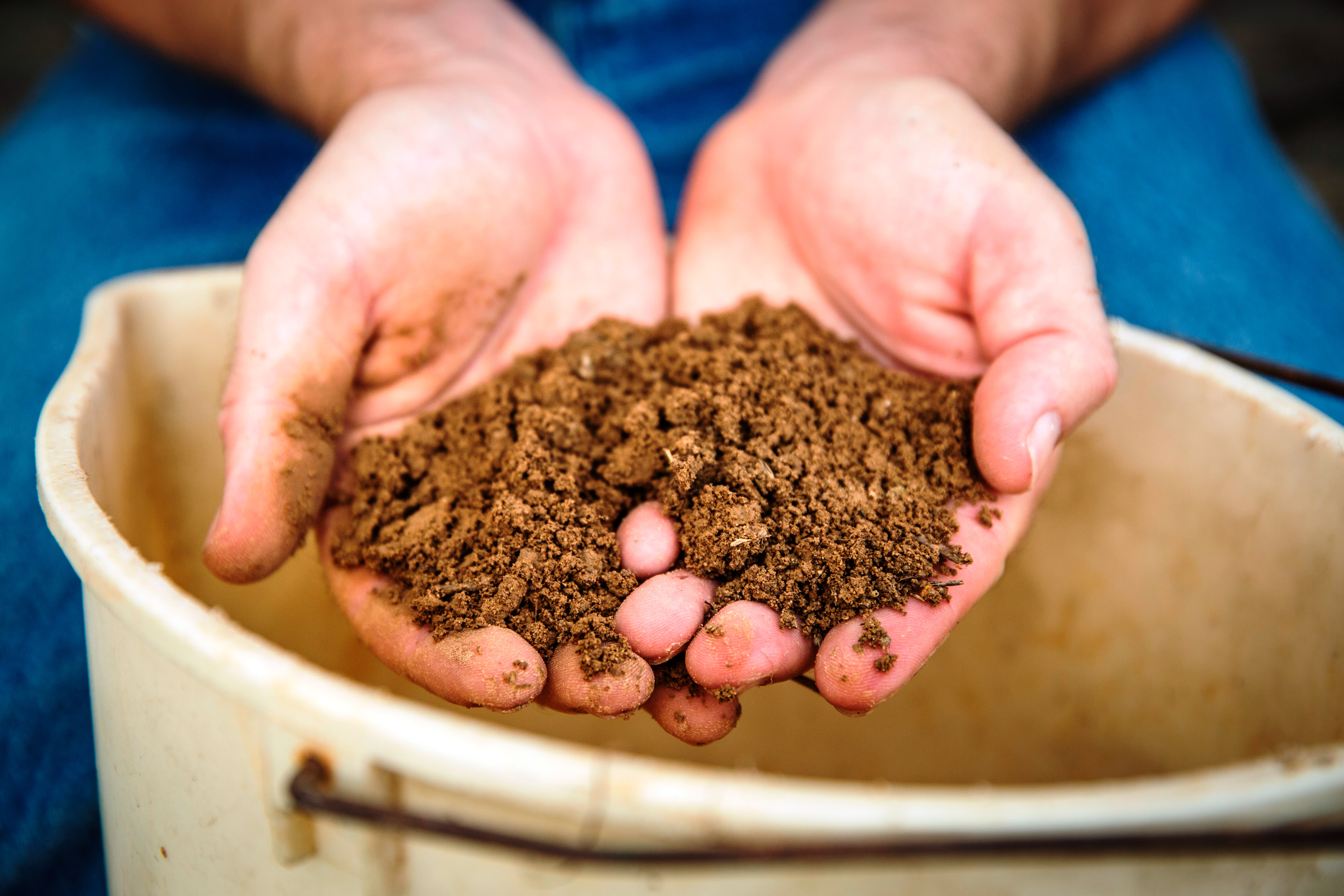
Project Highlight
Demonstration Farm
This spring, TNC and local farmer Todd Ballard launched a 30-acre regenerative agriculture demonstration farm near Twin Falls, ID, to test cropping techniques in the Magic Valley and expand public awareness of soil health in efforts to inspire wider adoption of regenerative agriculture practices across the state. The demonstration farm builds on TNC’s relationships with Idaho’s agriculture community as part of its regenerative agriculture initiative, a program that brings together the ingenuity of local farmers and TNC’s conservation experience to transform agriculture for the benefit of people and nature.
"Moving towards a regenerative food system can have significant benefits for both farmers and the environment, but we know there are real financial and practical barriers to adopting these practices." says Neil Crescenti, TNC's agriculture program manager. "The goal of our work is to reduce those risks and uncertainties so that more producers can be part of the solution. With TNC's new demonstration farm, producers will be able to learn about sustainable practices tailored to our unique region and see the environmental and economic benefits in action."
Program Goals
- Mitigate climate change through regenerative farming techniques that restore soil, conserve water, and store more carbon in the ground.
- Support the economic viability of Idaho's agriculture community by removing financial barriers to adopting sustainable practices.
- Ensure a resilient water supply through improved water quality and quantity.
- Demonstrate the environmental and economic benefits of regenerative practices, catalyzing widespread adoption across Idaho.
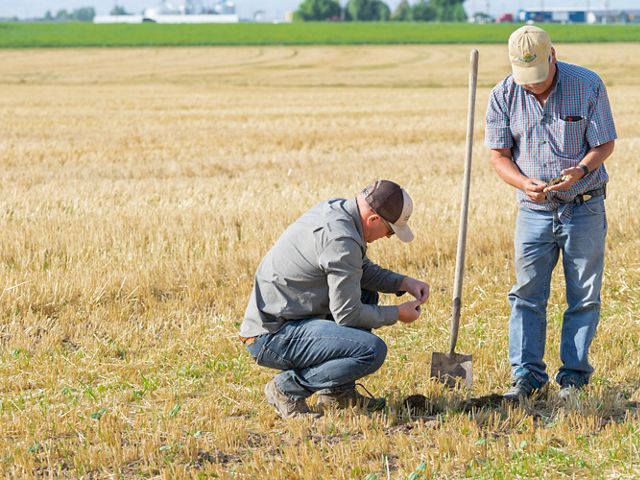
Scaling up Sustainable Change
We’re working directly with farmers to implement regenerative practices and launched a new demonstration farm in Twin Falls in Spring 2021. Farmers interested in regenerative agriculture will be able to tour the demonstration farms to see proven regenerative methods in action, such as no-till and cover crop planting. By partnering with farmers to absorb financial risks and remove barriers to adopting regenerative practices, TNC aims to scale up the number of regenerative farmlands to a critical tipping point that will catalyze sustainable change across the state.
Interested in learning about how regenerative agriculture could benefit your farm? Contact Brad Johnson, TNC’s agriculture strategy manager.
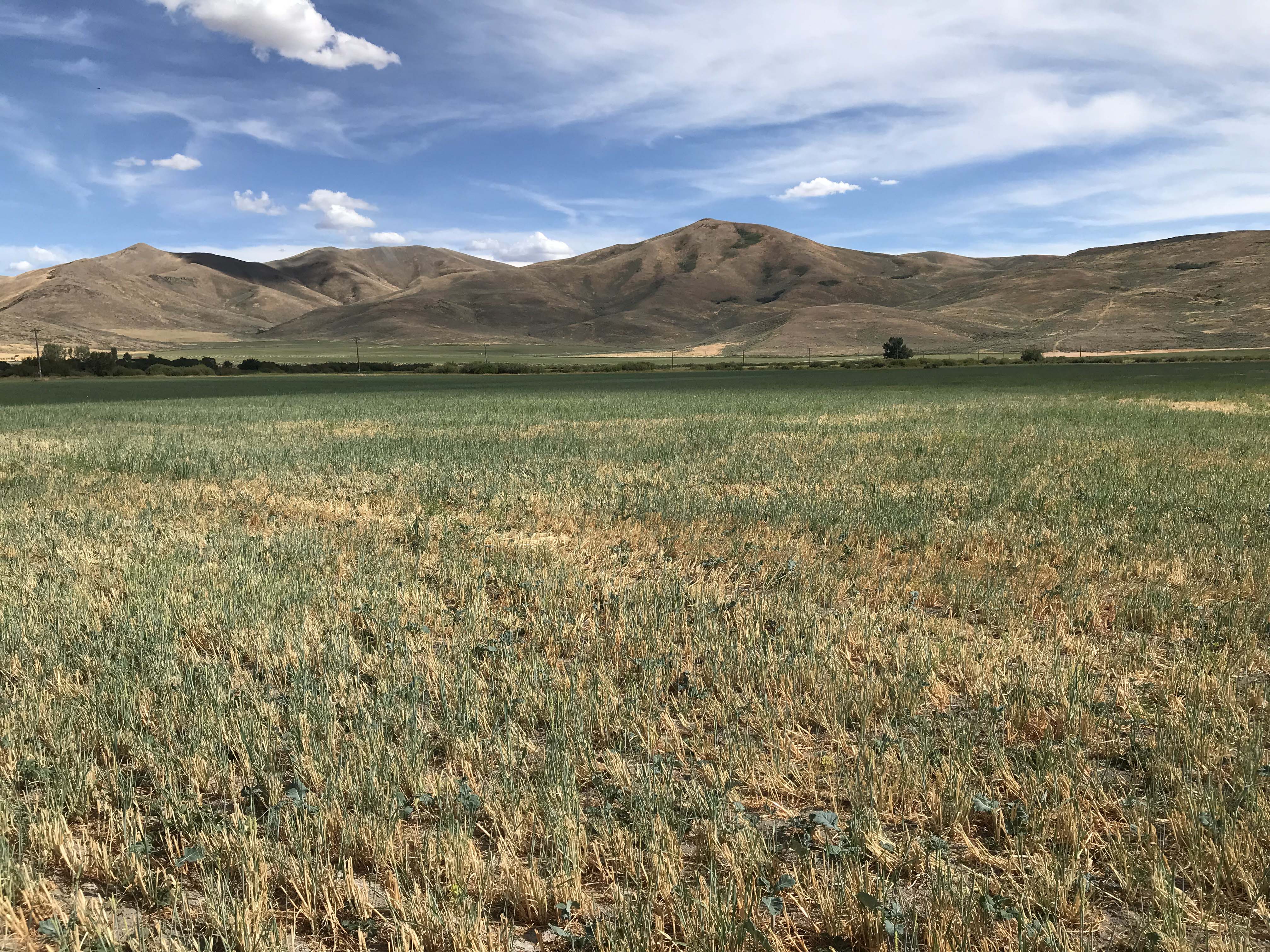
project highlight
Farming Benefits for Fish
A TNC farm adjacent to Silver Creek Preserve recently received the first-ever Trout-Safe certification from Salmon-Safe, a leading U.S. ecolabeling organization. The farm met Salmon-Safe’s high standards for Trout-Safe certification verifies actions that protect streams and provide benefits for fish.
The designation comes after TNC began working with the farm lessee to implement regenerative agriculture practices, like cover crops and crop diversification, that will enhance soil health, biodiversity and water quality in the Silver Creek watershed. The certification demonstrates how regenerative farming practices can have wide-reaching ecological effects that even benefit fish habitat.
Using Nature to Fight Climate Change
The regenerative agriculture practices we are promoting are among the most powerful ways we can fight climate change in Idaho. For example, planting cover crops can increase the amount of carbon stored in the soil, and preventing excess fertilizer use can reduce emissions of nitrous oxide, a potent greenhouse gas. Natural climate solutions like improved agriculture practices can reduce one fifth of U.S. greenhouse gas emissions, according to a recently published peer-reviewed article in Science Advances.
In an agricultural state like Idaho, where agriculture forms a significant part of the state’s economy, a regenerative food system is one of our greatest opportunities—not just to protect nature, but to ensure thriving communities.
Resources
- Soil Health Principles (.pdf)
- Soil Coverage (.pdf)
